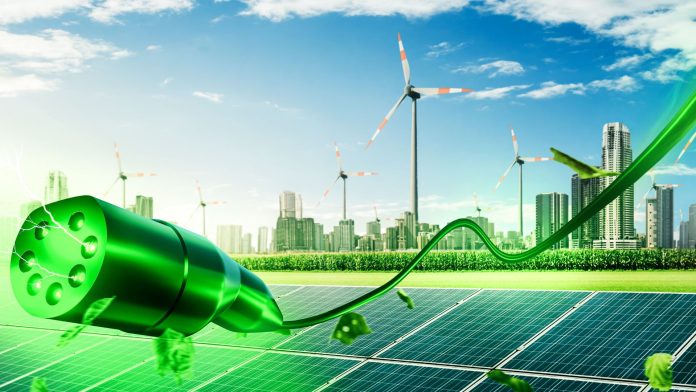Aware of the interest which exists in following the production and consumption of electric energy, we publish each month pertinent reports on conditions in the Croatian electric energy system. Data for this analysis are collected on hourly and daily levels through monthly reports for electric power and display all its features in Croatia. They integrate data for specific periods regarding the consumption, production as well as the development of renewable energy sources, cross-border exchanges as well as their changes. Following the report on electric power trends for the month of July, this report contains an overview of the most important indicators for the first seven months of this year and a comparison with the same period last year.
Electric energy trends in the period from January to July 2023

The overall transactions of electric power in the electric energy system of Croatia in the seven months of this year amounted to 15.552 GWh, of which the available energy, namely, consumption was 11.782 GWH while we exchanged in the export balance with foreign countries 1.086 GWh. The planned export in the first six months amounted to 1.351 GWh, and the planned import in July, 265 GWh. Unplanned import and export reached 3.505 GWh.
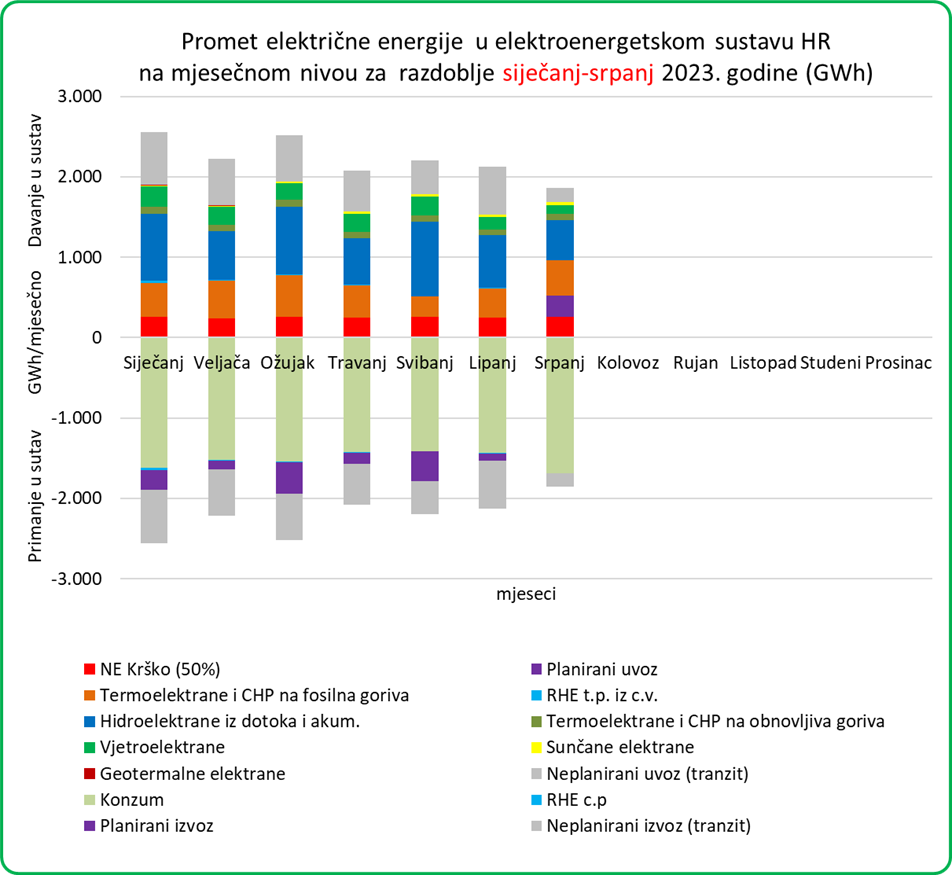
In the period from January to July, the overall production of electric power in Croatian power plants amounted to 10.016 GWh, of which the production from unrenewable energy sources was 2.936 GWh, namely 29.3% and production from renewables 7.080 GWh, namely, a significant 70.7%.
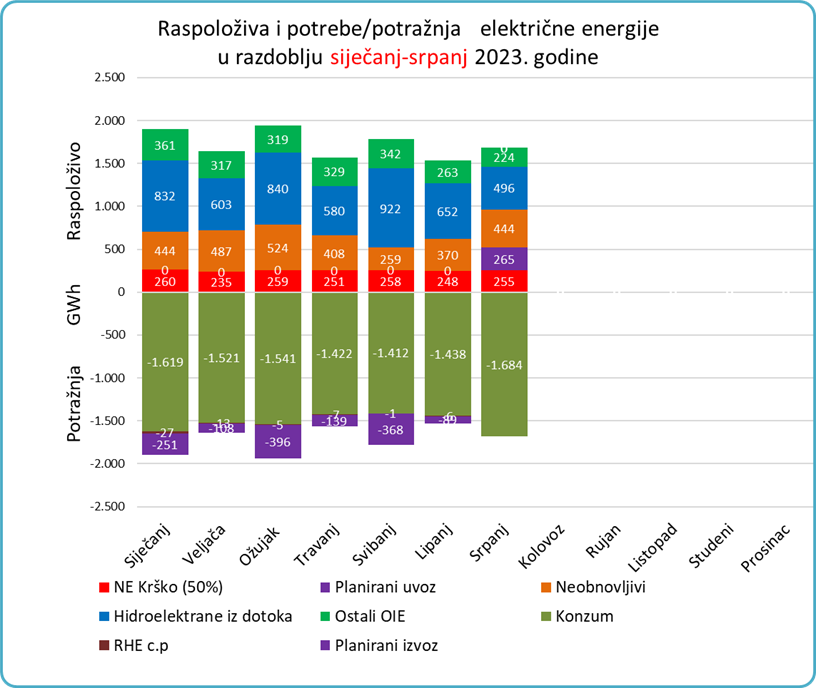
In the observed period, the overall consumption of electric energy amounted to 10.696 GWh, wherein domestic consumption was at 10.637 GWH, while reversible water-drawing power plants consumed 59 GWh. The Croatian part of the Krško nuclear plant produced 1.766 GWh of electricity in the first seven months. Considering that the available energy in the observed period was greater than the overall consumption by 1.086 GWh, these surpluses in the exchange balance were exported to foreign markets.
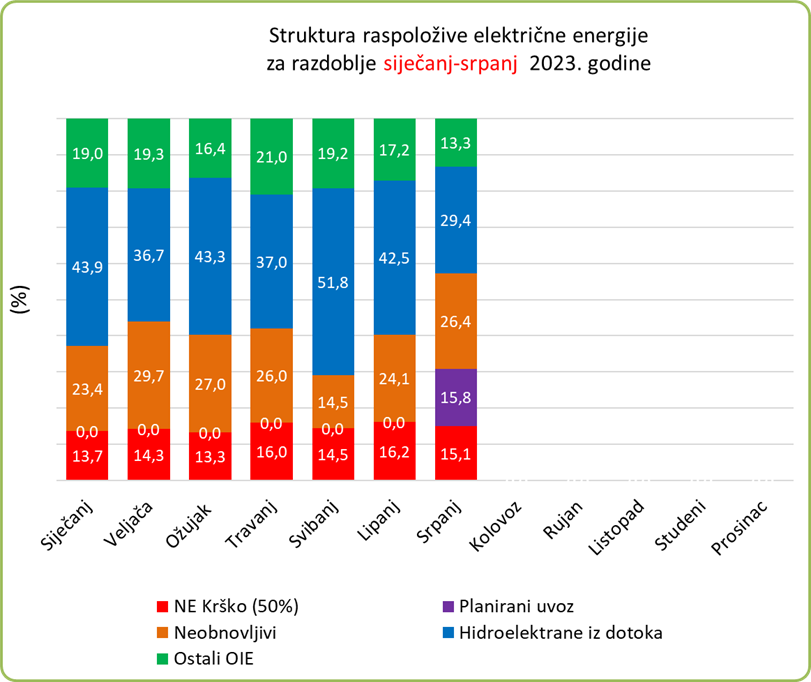
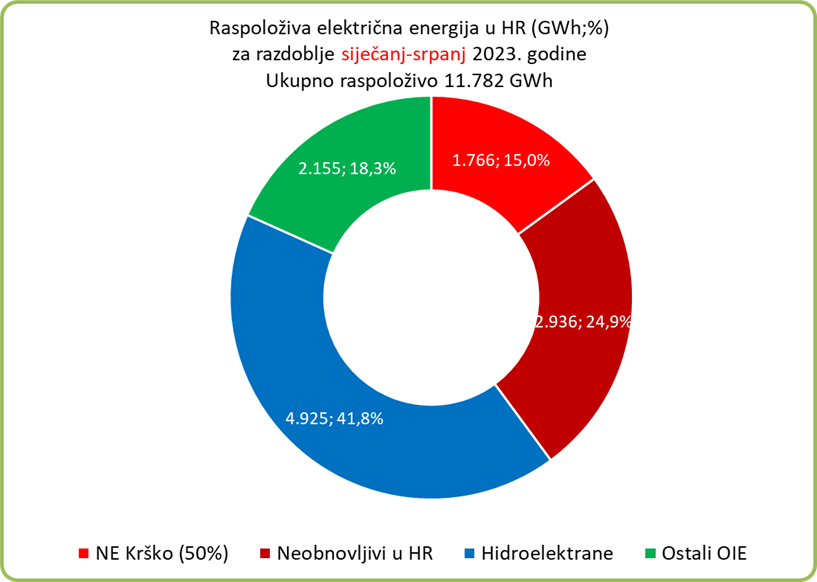
In the first seven months, renewables produced a substantial amount of electric power available for consumption. In the first seven months, they participated with 60.1% of the overall available power. Hydroelectric plants produced the most, namely, 41.6% while the other renewables produced 18.3%. The production from unrenewable sources accounted for 24.9 % and the Krško nuclear power plant for 15.0%
In the observed period we exchanged 1.086 GW of electric power with cross-border countries, of which exports accounted for 1.351 GWh and imports for 265 GWh.
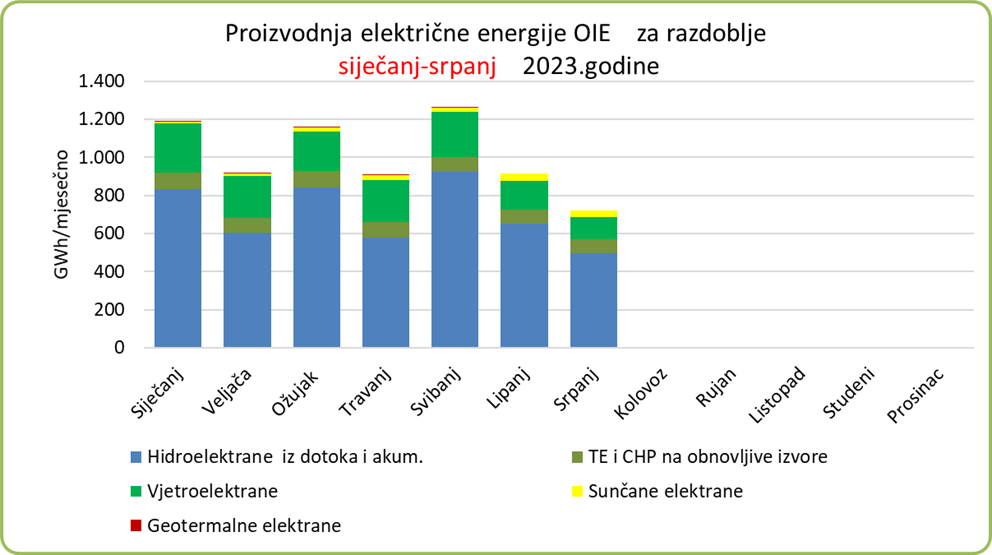
The total production from renewable sources in the first seven months was 7.080 GWh, but reservoirs were also emptied in relation to the beginning of the year in the amount of 13 GWh so the overall productivity of renewable sources amounted to 7.067 GWh. This year production from RES is expected to be 11 TWh of electric power, namely, about 27 TWh of primary energy.

Electric energy trends in the first seven months of this and last year
In the first seven months of this year, in comparison to the same period last year, very favorable energy results have been achieved which could positively reflect on the business operations of energy companies, before all of the Croatian Electric Power Company (HEP)
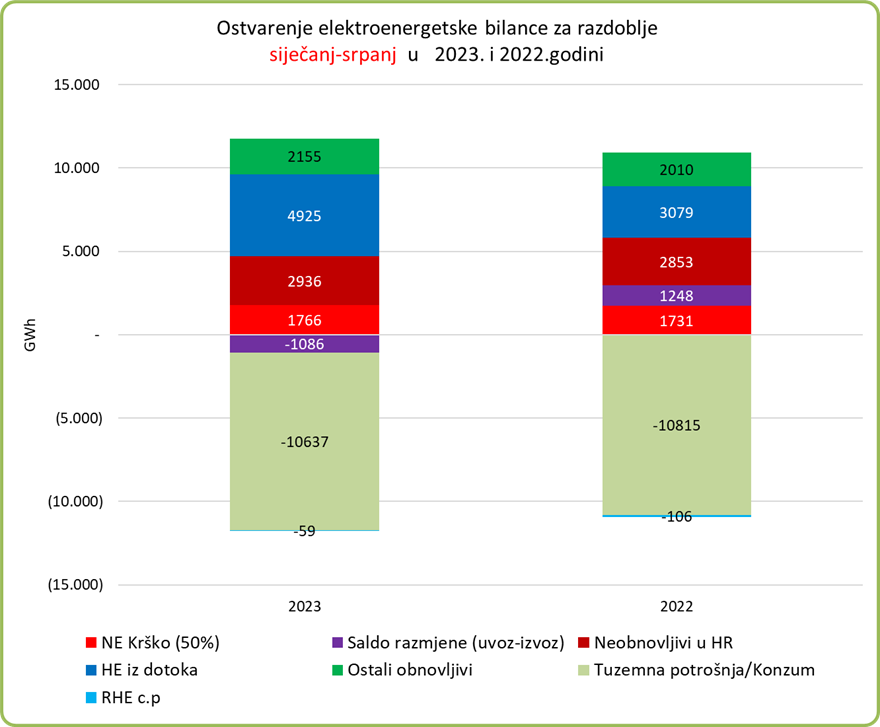
Almost all the production capacities achieved better results in the first seven months of this year in relation to the same period last year. Accordingly, in the observed period the Krško nuclear power plant produced 35 GWh of electricity more than last year and operated with almost nominal power. The production of energy from renewable sources was also greater by 1.991 GWH, emphasized by the greater production of hydroelectric plants from water flows and reservoirs by 1.846 GWh. In addition, in the observed period, wind farms produced 58 GWh of electric power while the production of energy from solar plants was greater by 112 GWh. The other renewables (biomass, biogas, geothermal) recorded a fall in production. In the observed period it was lower by 25 GWh.
The volume of the reservoirs decreased by 13 GWH in comparison to the beginning of the year, which is a 409 GWH improvement in relation to the same period last year. In the first seven months of last year we bought 1.248 GWH of electric power while in the same period of this year, due to the increased production of hydro-power plants, we sold a surplus of 1.086 GWh of electric power. Therefore in the observed period we have achieved a difference of 2.334 GWH in trade with foreign countries and achieved excellent results, particularly if we take into account the market prices of energy in that period.
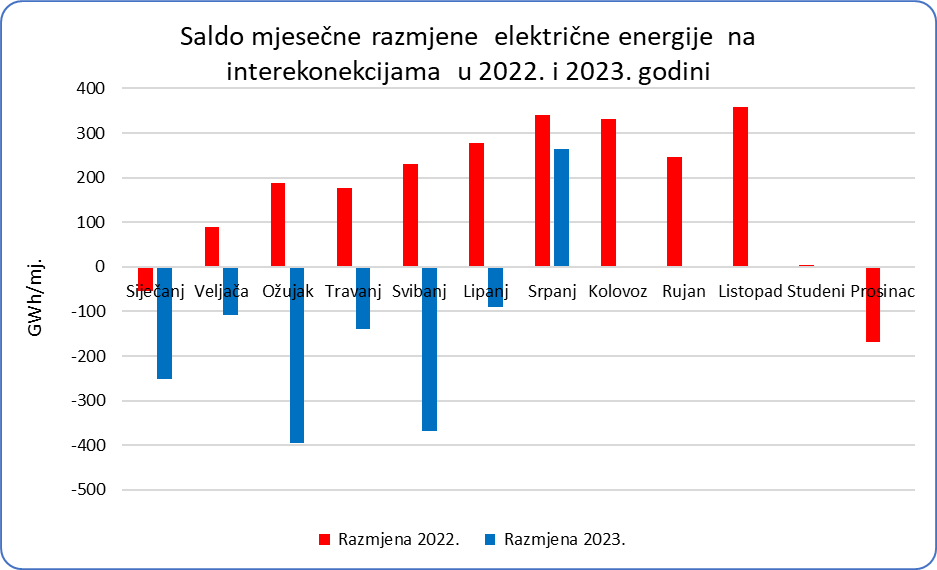
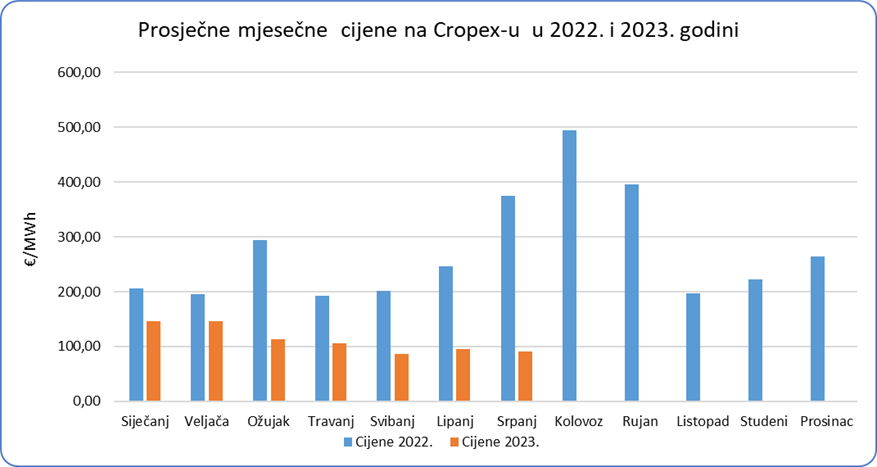
Taking into consideration exchanges with other markets and the achieved average monthly prices on Cropex in the first seven months of this and last year, it turns out that in relation to the same period last year, we achieved a more favorable exchange value in the amount of 466 million EUR, in view of the economic market exchange value this (sale) and last year (purchase).
The transmission of electric power toward other regulatory regions through the transmission grid decreased by 426 GWh in the observed period
Hydro energy in the first seven months of this and last year
The total threshold production of hydroelectric power plants in the first seven months of this year amounted to 4.972 GWh, of which unrenewable 47 GWh were produced from the drawn water of our reversible hydroelectric power plants.
The energy value of the water flow for hydroelectric power plants in the first seven months of this year amounted to 4.912 GWh the greater by 2.255 GWh in comparison with the same period last year.
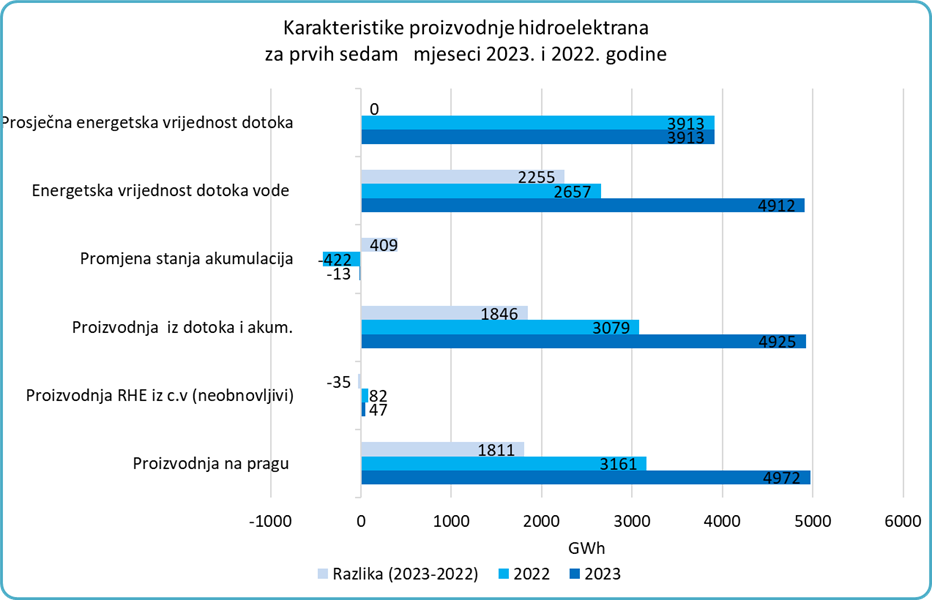
Due to the very good volume of the reservoirs for this time of the year and somewhat lower summer water flows for hydro-plants we can also expect favorable energy and economic trends in August and September. That will enable the security of the electric energy system and supply of consumers, regardless of the increased consumption due to the tourist season and operation of a large number ACs which is usually the reason for the summer import of electricity.
Other RES are expected to exceed 20% of the available energy this year
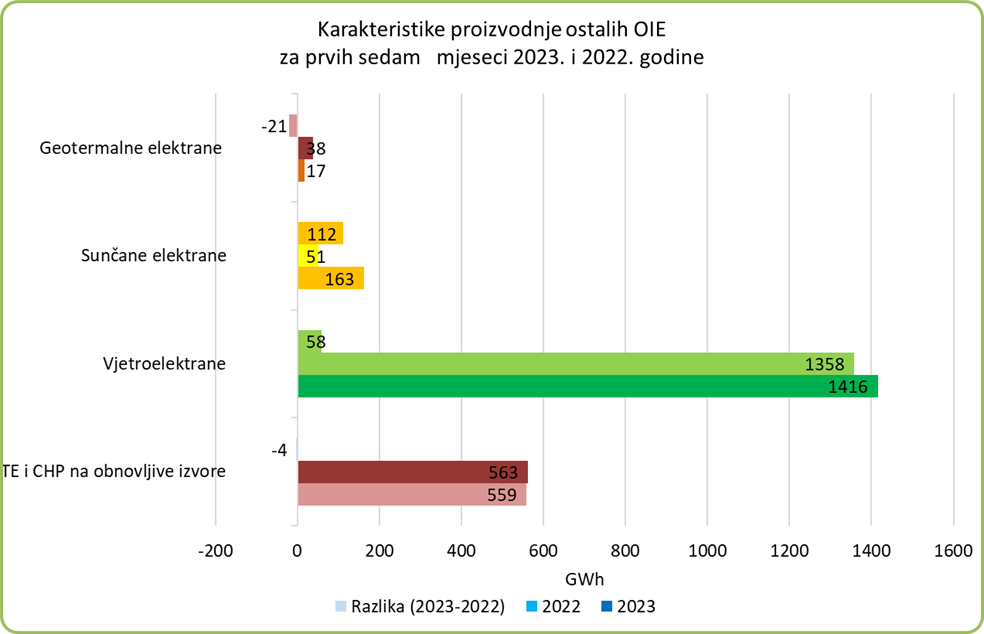
A considerable growth of solar plant production can be observed due to the initiation of the operation of new production capacities (306 MW on July 1 according to HEP ODS) and successful production of wind farms but also the decreased production of geothermal plants. However, if their development is continued it is to be expected that the share of RES in the overall energy balance will reach 20% this year.
In the preparation of this report, publicly available data were used from the websites of HEP, HOPS, HROTE, CROPEX, Krško NP, ENTSO, DZS, RTE France, RED Electrica, World Data, IEA, EEX, EPEX, IRENA.


